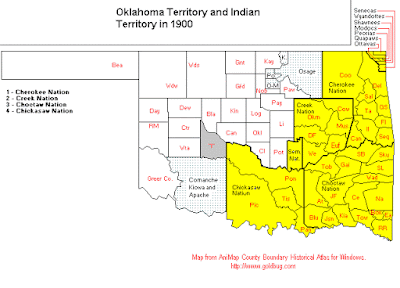Still, there also had to be a sense of adventure.
Train travel was a romance in and of itself. This song from 1908 was written about the Rock Island Rail Road.
The
Great Rock Island Route 1882
by
J. A. Roff
Have
you ever heard it rumored,
As
you journeyed to the West,
Of
the many mighty railroads,
Which
was greatest and the best?
The
public long have said it,
And
'tis true, beyond a doubt,
That
for safety, time and comfort
Take
the "Great Rock Island Route".
Chorus
--
Only
listen to the jingle, and the rumble, and the roar,
As
she dashes through woodland and skims along the shore!
See
the mighty, rushing engine -- hear the merry bell ring out,
As
they speed along in safety, on the "Great Rock Island Route"!
In
her crowded palace coaches
All
is happiness and joy,
From
the father and the mother
To
the little girl and boy;
And
a sweet look of contentment
From
every face shines out --
For
the people all are happy
On
the "Great Rock Island Route".
Chorus
Through
darkest hour of midnight
Hear
the rumble and the roar,
As
she glides like bird of spring time
Past
the humble cottage door;
On,
on into the darkness,
With
headlight streaming out
For
the safety of the people
On
the "Great Rock Island Route".
Chorus
Through
prairies, rich and fertile
With
cities covered o'er;
On,
through broad hills and valleys,
to
the great Missouri's shore.
Her
name's in every household;
'Tis
known the world throughout,
So
procure at once your tickets
By
the "Great Rock Island Route".
(The song was later adapted to a more popular version known as the "Wabash Cannonball" -see song links at the bottom)
Mattie no doubt had her hands full with two young children. This article, published in 1910, gives advice to young mothers traveling with children.
The train would carry them 500 miles. They would travel through Dallas, across the Texas border, and into vast praries- now ominously devoid of the millions of buffalo which had once roamed there. The railroads such as the one which carried them had also spelled the death of the buffalo, whose massive herds could take days to pass by, and who had been the life blood of the nomadic indian tribes who once roamed the plains. Things had changed. Now many of those tribes were relocated into sections of what had once been Indian Territory and was now the state of Oklahoma.
In 1907, there were over 680,000 Indians living in Oklahoma; over 190,000 Chickasaw, 182,000 Choctaw, 145,000 Creek, 140,000 Cherokee, along with many other tribes- the Seminole, Osage, Ponca, Cheyenne and Arapaho, and Comanche and Apache. The maps below show their lands in 1900 before statehood.
Mattie would surely have been watching out her window as they passed through the lands of what she thought were her native Choctaw. (We recently found out via DNA that we have no Indian blood despite the family stories!)
But just as the buffalo had disappeared, so had much of the Indian ways of life. Many children were taken to missionary and government schools where they were taught Christianity and vocational skills to prepare them for life in a white man's world.
 |
| Wagons from an Indian school hauling wheat to market in Oklahoma |
After they passed through Indian Territory they would have come to the new capitol of Oklahoma City.
The 1907 census showed 783,000 people living in Oklahoma outside of the Indian Territory. 28,000 lived in Garfield County, where Enid was located. Here they would switch trains.
The Garrisons had farms in Alfalfa County, population 16,000 and Major County, population 14,000. By comparison, in 2014, Alfalfa County had a population of 5,790 and Major County 7,750.
Alfalfa County had developed along the railroad lines. The Kansas City, Mexico, and Orient line ran northward and had stops at Cleo Springs, Aline, and Carmen. This was the route for U.S. Mail delivery. Towns with railroad stations had mail delivery six days a week. Post offices further from the train might only get mail twice a week.
Living near Cleo Springs, Mattie was going to be able to get regular letters from her family.
 |
| Mailstops on the rail line through Major and Alfalfa County Oklahoma |
Rock Island Line song by Donegan
http://www.okgenweb.org/~itgenweb/itprojects/postal-routes.htm


















